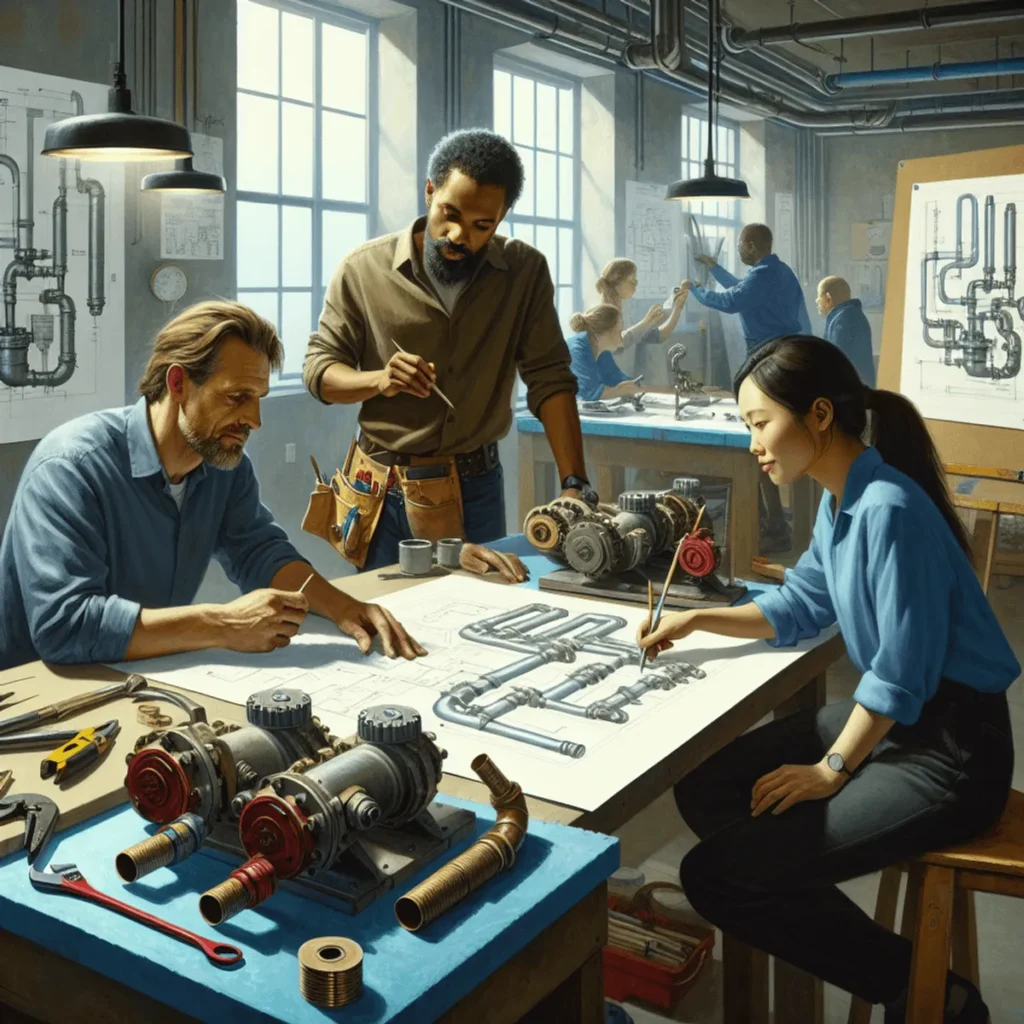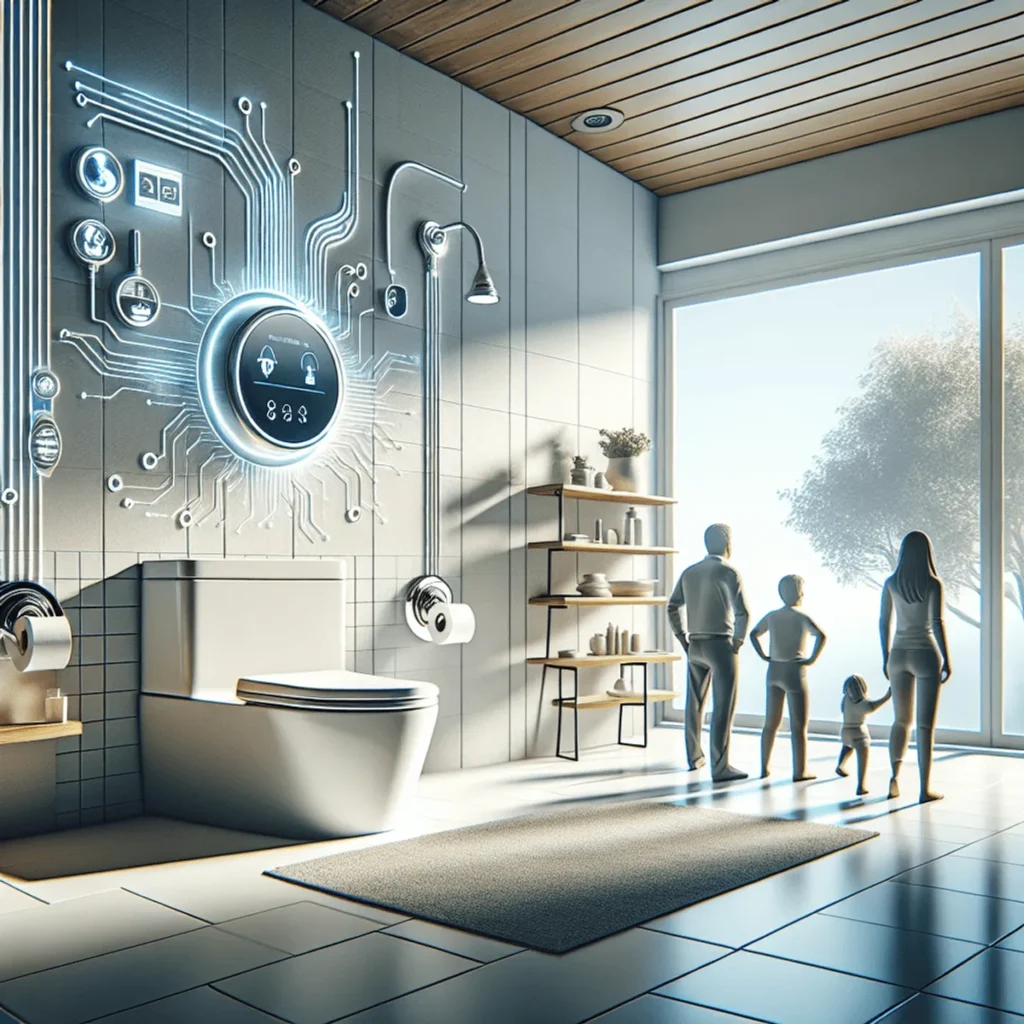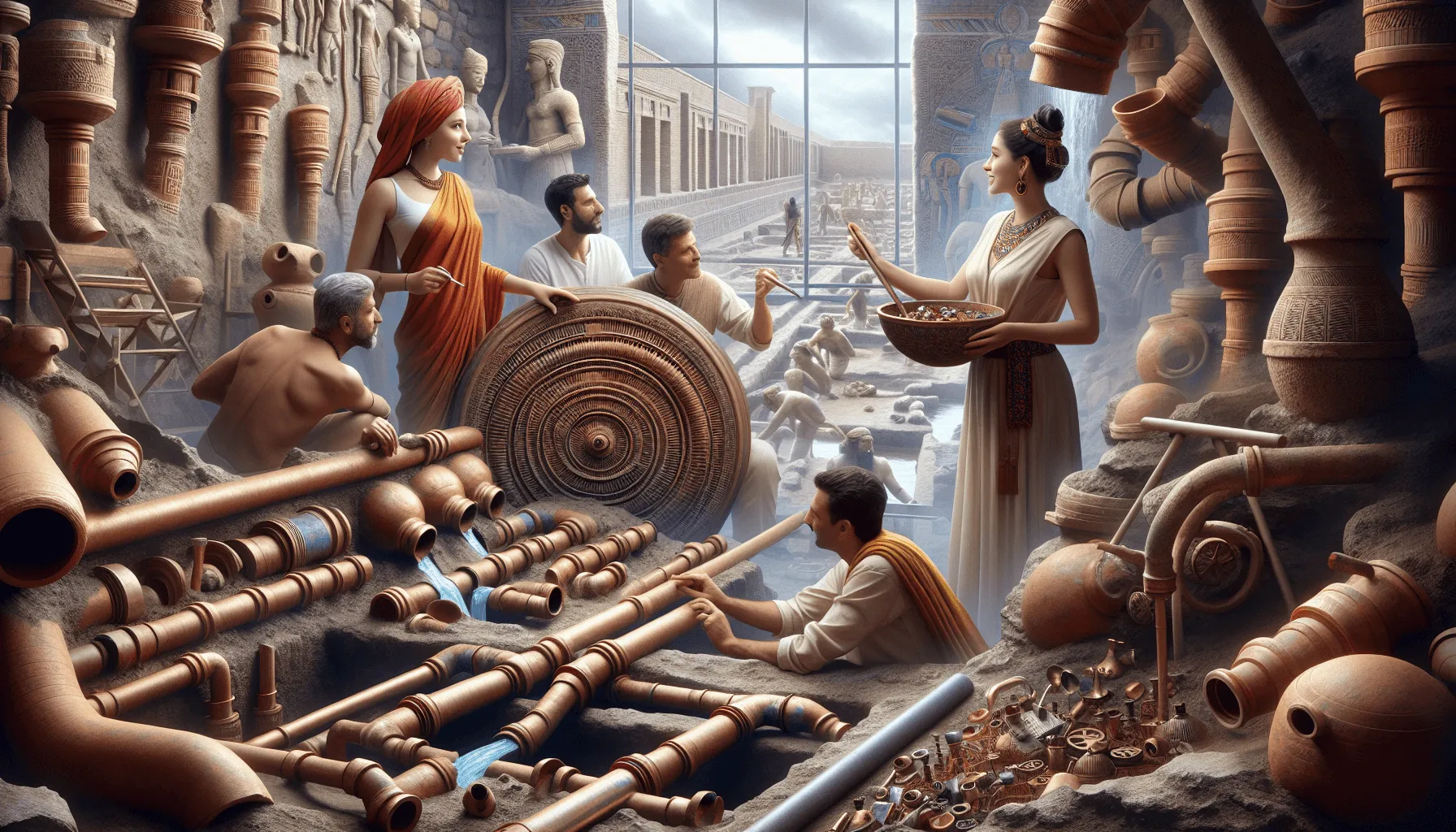Indoor plumbing has a rich history that spans thousands of years, from ancient civilizations to modern advancements. This essential component of daily life has evolved significantly, shaping our comfort, hygiene, and overall quality of life.
This article provides a comprehensive timeline exploring the key milestones and innovations in the development of indoor plumbing systems. You will discover:
- Ancient advancements: From clay water pipes in the Harappa civilization to Rome’s aqueducts.
- Pioneering figures: Contributions by innovators like Sir John Harrington and Thomas Crapper.
- Evolution in America: How cities like Philadelphia led the way in municipal water systems.
- Modern advancements: The transition to non-metallic piping and smart home integration.
Dive into the fascinating journey of how indoor plumbing has transformed over centuries to become a cornerstone of modern infrastructure.
Ancient Civilizations and Early Plumbing Systems
Indoor plumbing’s roots trace back thousands of years, with evidence of early systems found in several ancient civilizations. These early innovations laid the groundwork for modern plumbing technologies.
Harappa Civilization
The Harappa civilization, part of the Indus Valley Civilization, is one of the earliest known examples of plumbing technology. Dating back to around 4000-3000 B.C., archeological excavations have uncovered clay water pipes used for transporting water. These pipes demonstrate an advanced understanding of hydraulic engineering for that era.
Ancient Egypt
By 2500 B.C., the Egyptians were utilizing copper pipes in their bathrooms within pyramids. This development marked a significant advancement in the materials used for plumbing, showcasing early innovations in metalwork and sanitation practices. These copper pipes were primarily used to transport water and remove waste, indicating a sophisticated approach to hygiene.
Read Also: How to Stop the Leak from Pool Incoming Water Copper Pipe
Minoan Civilization
The Minoans, flourishing around 1000 B.C. on the island of Crete, introduced several features that are now commonplace. They utilized bathtubs and flush toilets, emphasizing the importance of sanitation in daily life. Their advanced drainage systems included underground sewage setups, which helped prevent waste accumulation and promote public health.
Ancient Rome
Roman advancements between 500 B.C. and 455 A.D. significantly revolutionized water supply and waste disposal methods. The Romans constructed extensive aqueducts to transport water over long distances, ensuring a reliable supply to urban centers. They also developed sophisticated sewer systems like the Cloaca Maxima, one of the world’s earliest sewage systems, which efficiently managed wastewater and contributed to urban cleanliness.
These pioneering efforts from ancient civilizations underscore the longstanding human endeavor to develop effective indoor plumbing systems for improved sanitation and public health.
Key Figures in Plumbing History

Significant advancements in plumbing can be traced back to the innovations of key individuals who revolutionized sanitation systems through their ingenious designs and inventions.
Sir John Harrington‘s Contribution: The First Modern Flushing Toilet (1596 A.D.)
Sir John Harrington, an English courtier and godson of Queen Elizabeth I, introduced the first modern flushing toilet in 1596. This innovation was groundbreaking as it included a water trap to prevent odors from escaping, setting a precedent for future toilet designs. Harrington’s invention, known as the “Ajax,” was installed in his own home and a special version was created for the Queen herself.
Read Also: 5 Expert Tips for Bending Exhaust Pipes with Ease
Alexander Cummings‘ Innovations in Toilet Design
In the 18th century, Alexander Cummings made significant contributions to toilet technology. His most notable innovation was the S-trap mechanism, patented in 1775. The S-trap used a simple yet effective design to seal off sewer gases from entering homes, an essential feature still prevalent in modern plumbing systems. This innovation not only improved hygiene but also enhanced overall living conditions by addressing common sanitation issues.
Thomas Crapper‘s Valve-and-Siphon Design Patent (1891)
Thomas Crapper is often mistakenly credited with inventing the flush toilet; however, his true contribution lies in his advancements and improvements to existing designs. In 1891, he patented a valve-and-siphon design that enhanced flushing efficiency. While myths surrounding his influence persist, Crapper’s role as a successful businessman and promoter of sanitary plumbing cannot be understated. His work led to the widespread adoption of more efficient and hygienic toilets.
Key Takeaways:
- Sir John Harrington: Introduced the first modern flushing toilet.
- Alexander Cummings: Developed the S-trap mechanism to prevent sewer gases.
- Thomas Crapper: Patented an improved valve-and-siphon design for toilets.
These pioneers laid the foundation for modern plumbing systems, each contributing essential elements that remain integral to contemporary designs.
The Evolution of Indoor Plumbing in America
Philadelphia’s Municipal Water System (1804)
In 1804, Philadelphia took a groundbreaking step in urban development by introducing a municipal water system. This system used cast iron pipes, which was a big deal because it meant clean water could be distributed throughout the city from one central location. The choice of strong materials like cast iron showed an early understanding of the need for durable plumbing solutions.
Read Also: Can You Paint PEX Pipe? 5 Tips for a Flawless Finish
Tremont Hotel’s Indoor Plumbing (1829)
The Tremont Hotel in Boston made history in 1829 by becoming one of the first hotels to have indoor plumbing. This set a new standard for luxury and convenience. Not only did this innovation make guests’ stays more enjoyable, but it also played a crucial role in making indoor plumbing popular among wealthy households. By providing features like running water and private bathrooms, the Tremont Hotel demonstrated how modern plumbing could greatly enhance the quality of life.
White House Installation (1833)
In 1833, the White House got its indoor plumbing system, showing just how important this innovation was becoming even for prestigious places. This development proved that having reliable access to clean water and efficient waste disposal was essential for both public health and comfort. As a symbol of American progress, the White House emphasized how crucial indoor plumbing was in improving living standards.
These milestones highlight key moments when people started realizing that indoor plumbing was an essential part of city life and home comfort in America. The progress made during this time laid the foundation for future innovations that continue to shape our modern plumbing systems today.
How Plumbing Technology Has Evolved Over Time

Innovations in plumbing technology have continually transformed our daily living conditions, addressing both convenience and public health concerns.
1. Edwin Ruud’s Gas-Fired Hot Water Heater (1889)
Edwin Ruud’s invention of the gas-fired water heater in 1889 marked a significant milestone. This breakthrough revolutionized how we heat water, making it possible to enjoy hot water on demand for bathing and other purposes. Before this invention, heating water required cumbersome and time-consuming processes involving stoves or open flames.
Read Also: 5 Simple Steps to Repair a Pinhole Leak in Your PEX Pipe
2. Chicago’s Comprehensive Sewer System (1885)
In 1885, Chicago established the first comprehensive sewer system in America, a pivotal moment in plumbing history. This development was crucial in addressing public health issues related to inadequate waste disposal methods. By implementing an extensive network of sewers, as detailed in this blog post, Chicago set a precedent for urban sanitation, reducing the spread of diseases and improving overall public health.
3. Post-WWII Innovations: Non-Metallic Piping Systems
Post-World War II saw a shift from traditional materials like cast iron and copper to non-metallic piping systems such as PVC. These new materials offered greater durability and resistance to corrosion. The introduction of PVC pipes not only reduced costs but also extended the lifespan of plumbing systems, minimizing maintenance and replacement needs.
4. Sensor-Flushing Toilets in Japan (1986)
The emergence of sensor-flushing toilets in Japan in 1986 exemplified how modern technology continues to shape bathroom fixtures. These toilets use infrared sensors to detect when a user has finished using the toilet, automatically triggering the flush mechanism. This innovation enhances hygiene by reducing contact with surfaces that can harbor germs and bacteria.
Advancements like these illustrate how plumbing technology has evolved, continually adapting to meet the changing needs of society while prioritizing efficiency and public health.
Modern Indoor Plumbing Standards and Practices Today

Modern indoor plumbing sets high standards for efficiency and sustainability. Innovations in toilet design have led to the development of modern toilet prototypes like dual-flush models. These toilets allow users to choose between different flush volumes, conserving water based on the waste type. This simple yet effective mechanism drastically reduces water usage, making it a valuable addition to water conservation efforts.
Well-designed sewage systems play a pivotal role in maintaining public health. Efficient waste management is essential for preventing the spread of diseases and ensuring a clean water supply. Advanced sewage treatment plants now incorporate sophisticated filtration and purification processes that minimize environmental impact.
Read Also: Does Homeowners Insurance Cover Replacing Cast Iron Pipes?
Key Features of Modern Indoor Plumbing
- Dual-flush toilets: Offer two flushing options, typically 0.8 gallons per flush (gpf) for liquid waste and 1.6 gpf for solid waste.
- Sewage systems: Modern designs incorporate multiple stages of treatment including primary sedimentation, biological treatment, and chemical disinfection.
Proper waste management remains crucial even as we embrace technological advancements. Investing in robust sewage infrastructure ensures that communities are safeguarded against public health risks associated with poor sanitation practices.
The Future Trends In Plumbing Technology To Watch Out For!
Smart Home Integration
One of the most exciting future trends in plumbing technology involves the integration of IoT devices. These smart-systems allow for remote monitoring and control of water usage, leak detection, and even temperature management. Imagine a world where you can monitor your home’s plumbing system from your smartphone, receiving alerts about potential issues before they become costly repairs.
Water-Saving Innovations
Water conservation remains a critical focus as modern plumbing continues to evolve. Advances in efficient fixtures and appliances aim to minimize water consumption without sacrificing performance. Dual-flush toilets, low-flow showerheads, and smart irrigation systems are just a few examples of innovations designed to reduce water waste while maintaining functionality.
By prioritizing these groundbreaking technologies, the plumbing industry is set to make significant strides in sustainability and convenience, ensuring that indoor plumbing remains an essential aspect of modern living.
FAQs (Frequently Asked Questions)
When was indoor plumbing invented?
Indoor plumbing has a rich history that spans thousands of years, with early evidence found in ancient civilizations such as the Harappa civilization (4000-3000 B.C.) and ancient Egypt (2500 B.C.).
What were some key advancements in plumbing during ancient civilizations?
Key advancements include the use of clay water pipes by the Harappa civilization, copper pipes in Ancient Egypt, bathtubs and flush toilets introduced by the Minoans, and the development of aqueducts and sewer systems by the Romans.
Who are some notable figures in the history of plumbing?
Notable figures include Sir John Harrington, who created the first modern flushing toilet in 1596 A.D.; Alexander Cummings, who introduced innovations like the S-trap mechanism in the 18th century; and Thomas Crapper, known for his valve-and-siphon design patent in 1891.
How did indoor plumbing evolve in America?
The evolution of indoor plumbing in America saw significant milestones like Philadelphia’s municipal water system implementation in 1804, the Tremont Hotel showcasing indoor plumbing in 1829, and its installation at the White House in 1833.
What are some modern advancements in plumbing technology?
Modern advancements include Edwin Ruud’s gas-fired hot water heater (1889), Chicago’s first comprehensive sewer system (1885), a shift to non-metallic piping systems post-WWII, and the emergence of sensor-flushing toilets in Japan (1986).
What future trends can we expect in plumbing technology?
Future trends include smart home integration with IoT devices for remote monitoring, as well as ongoing innovations aimed at developing more efficient fixtures and appliances that minimize water consumption without compromising performance.


Comments are closed